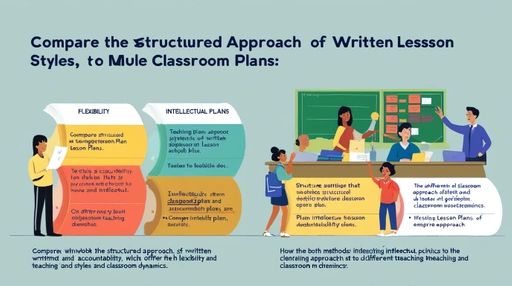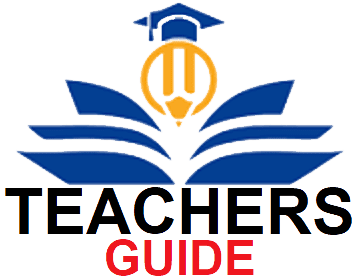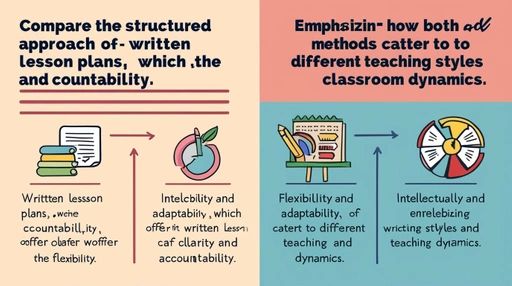Written Lesson Plan vs. Intellectual Plan in Classroom Teaching, In the realm of education, the debate over the use of written lesson plans versus intellectual (mental) plans is a perennial topic among educators. Both approaches offer unique advantages and challenges, yet their effectiveness largely depends on context, teaching style, and classroom dynamics. Understanding these two methods and their applications can empower teachers to optimize their instructional strategies and enhance learning outcomes.
Understanding the Written Lesson Plan
A written lesson plan is a formalized document that outlines the teaching objectives, instructional methods, materials, and assessment strategies for a specific lesson. It serves as a roadmap, guiding educators through the teaching process and ensuring that all critical components of the curriculum are covered.
Key Features of a Written Lesson Plan:
- Structure and Organization: Written plans provide a clear structure, detailing what will be taught, how it will be taught, and the time allocated for each activity.
- Reference Tool: They act as a reference point, helping teachers stay on track and maintain consistency across lessons.
- Accountability: Written plans are often required by educational institutions to ensure teachers meet curriculum standards and learning objectives.
- Documentation: They offer a record of instruction that can be reviewed and adjusted for future use.
Advantages of Written Lesson Plans:
- Preparation and Clarity: A detailed plan helps teachers anticipate challenges, prepare resources, and establish clear learning goals.
- Adaptability: While fixed in writing, these plans can be adjusted to accommodate varying student needs or unexpected classroom scenarios.
- Collaboration: Written plans facilitate collaboration among educators by providing a shared framework for teaching.
Limitations of Written Lesson Plans:
- Time-Consuming: Creating detailed plans can be time-intensive, especially for novice teachers.
- Rigidity: Over-reliance on a written plan can limit spontaneity and adaptability in dynamic classroom situations.
- Over-Emphasis on Process: Teachers may focus more on completing the plan than responding to real-time student engagement or understanding.

Understanding the Intellectual Plan
An intellectual, or mental, plan is an informal, often unwritten approach where teachers mentally outline their teaching objectives and strategies. This approach relies heavily on the teacher’s experience, intuition, and understanding of the subject and students.
Key Features of an Intellectual Plan:
- Flexibility: Intellectual plans allow teachers to adapt their instruction dynamically based on real-time classroom interactions.
- Personalization: They often cater to the immediate needs and learning pace of students, fostering a more responsive teaching environment.
- Experience-Based: This approach depends on the teacher’s expertise and familiarity with the content and students.
Advantages of Intellectual Plans:
- Adaptability: Teachers can modify their approach mid-lesson to address student questions or explore unplanned but relevant topics.
- Time Efficiency: Mental planning requires less preparatory time, enabling teachers to focus on other tasks.
- Spontaneity: Intellectual plans encourage creativity and spontaneity, making lessons more engaging and dynamic.
Limitations of Intellectual Plans:
- Lack of Structure: Without a formal outline, lessons may lack coherence and consistency.
- Dependence on Experience: Novice teachers may struggle to implement effective intellectual plans due to limited experience.
- Accountability Issues: The absence of written documentation can make it difficult to assess the alignment of teaching with curriculum standards.
Comparing Written and Intellectual Plans
| Aspect | Written Lesson Plan | Intellectual Plan |
|---|---|---|
| Preparation Time | Requires significant time and effort | Minimal preparatory time |
| Structure | Provides a detailed, organized framework | Informal and flexible |
| Adaptability | Moderately adaptable, depending on the teacher | Highly adaptable to real-time classroom dynamics |
| Documentation | Offers a tangible record for review and accountability | Lacks formal documentation |
| Suitability | Ideal for novice teachers and formal observations | Better suited for experienced teachers |
Application in Classroom Teaching
The choice between written and intellectual plans depends on various factors, including teacher experience, classroom environment, and institutional requirements.
For Novice Teachers: Written lesson plans are essential tools for new educators as they provide a structured approach to teaching. By detailing every aspect of the lesson, novice teachers can build confidence, ensure curriculum alignment, and avoid missing critical content.
For Experienced Teachers: Experienced educators often lean towards intellectual planning due to their familiarity with the subject matter and ability to manage classroom dynamics effectively. They can intuitively adjust their teaching methods to meet students’ needs without relying on written documents.
Hybrid Approach: Many educators find that a combination of both approaches works best. Starting with a written plan for key objectives and transitions, teachers can then rely on intellectual planning to adapt to the flow of the lesson. This hybrid strategy provides the benefits of structure and flexibility.
Conclusion
The debate between written lesson plans and intellectual plans in classroom teaching highlights the importance of context and individual teaching styles. Written plans offer structure, accountability, and consistency, making them invaluable for new teachers and formal educational settings. Conversely, intellectual plans foster flexibility and responsiveness, catering to the dynamic nature of classroom interactions. Ultimately, the most effective approach combines the strengths of both methods, allowing educators to prepare thoroughly while remaining adaptable to the needs of their students. Balancing these approaches can empower teachers to deliver impactful lessons and foster meaningful learning experiences.


1 thought on “Written Lesson Plan vs. Intellectual Plan in Classroom Teaching”
Comments are closed.